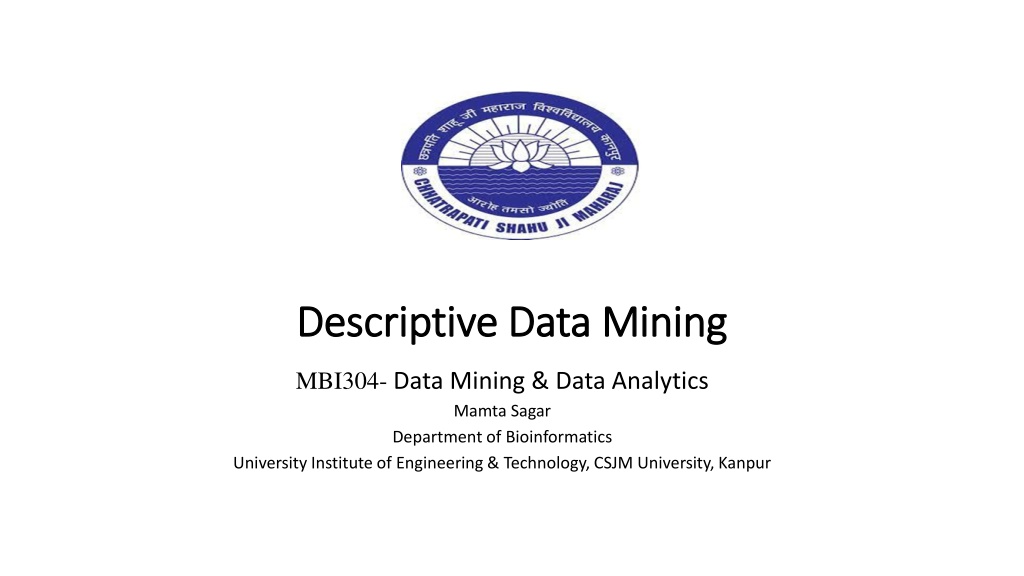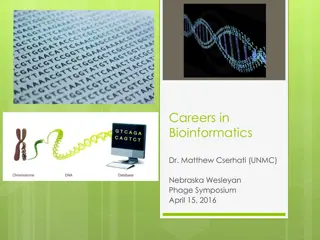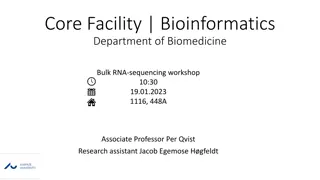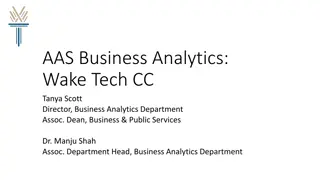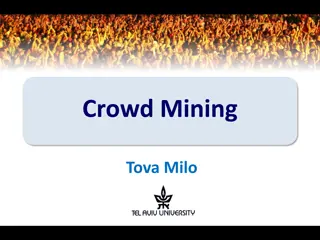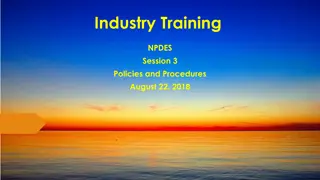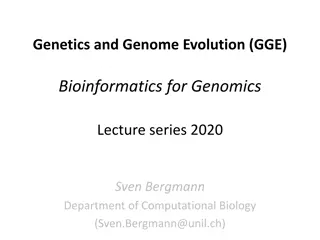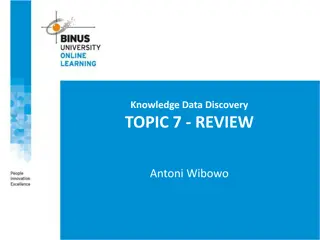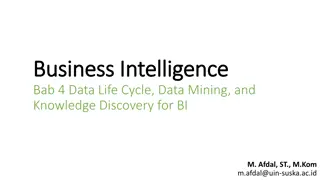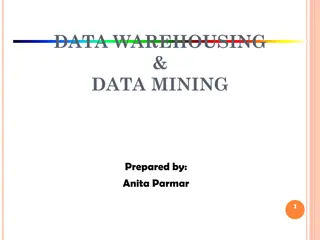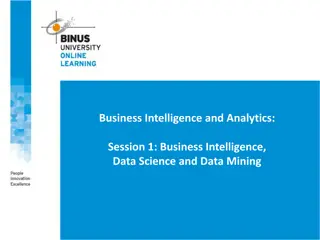Understanding Data Mining and Analytics in Bioinformatics
Data mining in bioinformatics involves descriptive analysis of statistical attributes, creating predictive models, and empirically verifying them. By employing algorithms from various fields, data mining helps in tasks like classification, clustering, association analysis, and regression. The process includes data description, model building, and testing on new data to gain insights beneficial for decision-making.
Download Presentation

Please find below an Image/Link to download the presentation.
The content on the website is provided AS IS for your information and personal use only. It may not be sold, licensed, or shared on other websites without obtaining consent from the author. Download presentation by click this link. If you encounter any issues during the download, it is possible that the publisher has removed the file from their server.
E N D
Presentation Transcript
Descriptive Data Mining Descriptive Data Mining MBI304- Data Mining & Data Analytics Mamta Sagar Department of Bioinformatics University Institute of Engineering & Technology, CSJM University, Kanpur
describe the data The first and simplest analytical step in data mining is to describe the data summarize its statistical attributes (such as means and standard deviations), visually review it using charts and graphs, and look for potentially meaningful links among variables
The final step is to empirically verify the model. For example, from a database of customers who have already responded to a particular offer, you ve built a model predicting which prospects are likeliest to respond to the same offer. Can you rely on this prediction? Send a mailing to a portion of the new list and see what results you get
But data description alone cannot provide an action plan. You must build a predictive model based on patterns determined from known results, then test that model on results outside the original sample. A good model should never be confused with reality (you know a road map isn t a perfect representation of the actual road), but it can be a useful guide to understanding your business.
Data mining employs algorithms and techniques from statistics, machine learning, artificial intelligence, databases and data warehousing etc. Some of the most popular tasks are classification, clustering, association and sequence analysis, and regression. Depending on the nature of the data as well as the desired knowledge there is a large number of algorithms for each task. All of these algorithms try to fit a model to the data (Dunham, 2002). Such a model can be either predictive or descriptive.
Clustering Clustering divides a database into different groups. The goal of clustering is to find groups that are very different from each other, and whose members are very similar to each other. Unlike classification (see Predictive Data Mining, below), you don t know what the clusters will be when you start, or by which attributes the data will be clustered.
Often it is necessary to modify the clustering by excluding variables that have been employed to group instances, because upon examination the user identifies them as irrelevant or not meaningful. After you have found clusters that reasonably segment your database, these clusters may then be used to classify new data. Some of the common algorithms used to perform clustering include Kohonen feature maps and K-means.
Dont confuse clustering with segmentation. Segmentation refers to the general problem of identifying groups that have common characteristics. Clustering is a way to segment data into groups that are not previously defined, whereas classification is a way to segment data by assigning it to groups that are already defined.
Link analysis Link analysis is a descriptive approach to exploring data that can help to identify relationships among values in a database. The two most common approaches to link analysis are association discovery and sequence discovery. Association discovery finds rules about items that appear together in an event such as a purchase transaction. Market- basket analysis is a well-known example of association discovery. Sequence discovery is very similar, in that a sequence is an association related over time.
Some terminology In predictive models, the values or classes we are predicting are called the response, dependent or target variables. The values used to make the prediction are called the predictor or independent variables. Predictive models are built, or trained, using data for which the value of the response variable is already known. This kind of training is sometimes referred to as supervised learning, because calculated or estimated values are compared with the known results. (By contrast, descriptive techniques such as clustering, described in the previous section, are sometimes referred to as unsupervised learning because there is no already-known result to guide the algorithms.)
